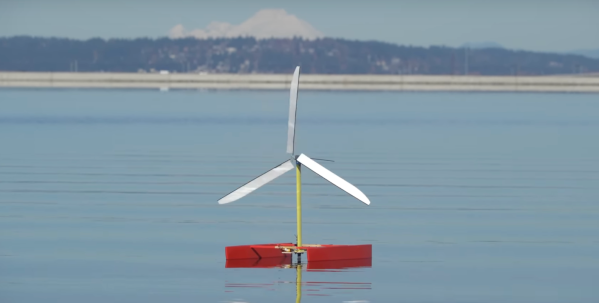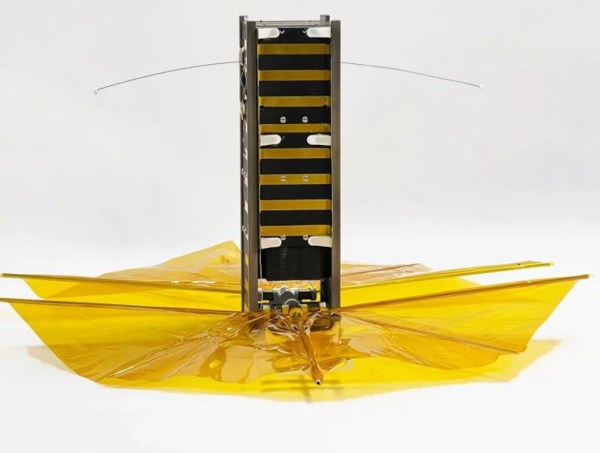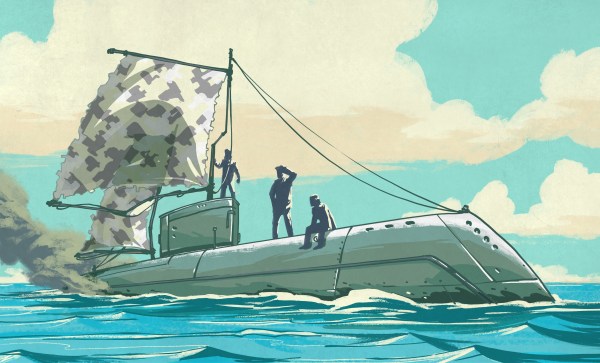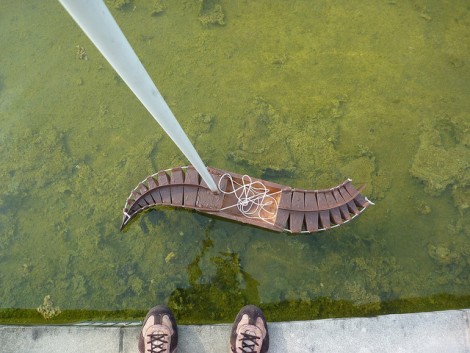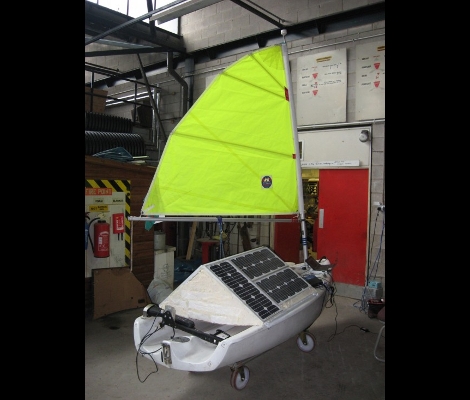Humans have been sailing various seas and oceans for thousands of years, and using boats for potentially even longer than that. But as a species we wouldn’t have made it very far if it was only possible to sail in the same direction the wind is blowing. There are a number of methods for sailing upwind, but generally only up to a certain angle. [rctestflight] wondered if there was some way of sailing straight upwind instead and built this rotary sail craft to test the idea.
Normally a boat sailing upwind will sail approximately 45° into it, then “tack” 90° across the wind until they’re at another 45° angle from the wind, this time facing the opposite direction. This back-and-forth nature is not the most efficient path, so this vessel uses a few propellers to bypass the traditional sail. The first iteration, built on a sleek catamaran hull, uses a large propeller to catch the wind’s energy, then transfers it mechanically through a set of shafts to an underwater prop.
It took a few tries to get the size and pitch of both propellers narrowed down to where the boat would move forward into the wind, but move it does. A second major iteration of the build uses a single shaft with no gears, with the trade-off that neither propeller is facing an ideal direction, but this has the added benefit of the boat naturally pointing itself upwind.
While none of the designs are speed demons, the concept is sound enough. It’s just that, in most cases, performing multiple tacks to get upwind is acceptable compared to the extreme efficiency losses and drag from propeller-driven sailing crafts like these. A more effective way of propelling a boat upwind, at least using modern technology, might be to trade sails for solar panels.

